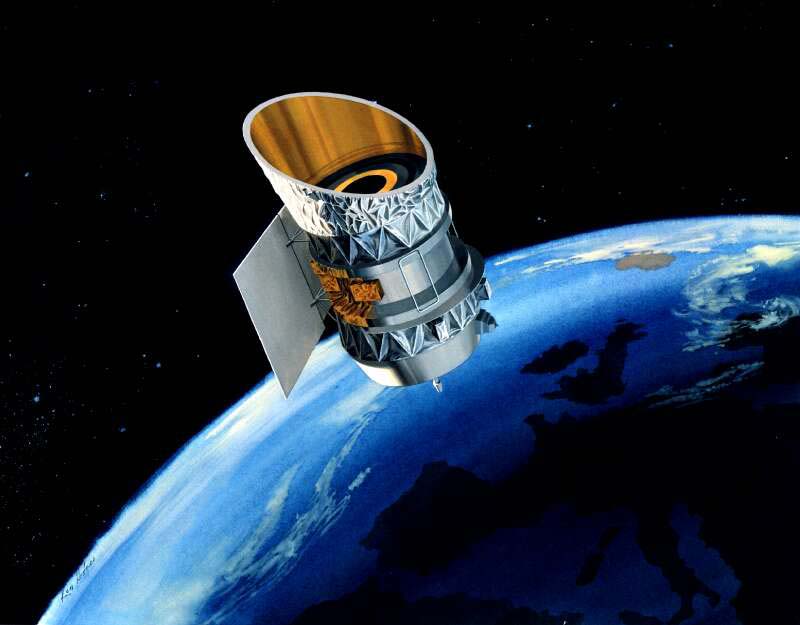|
HH 24-26
HH 24-26 is a molecular cloud and star-forming region containing the Herbig-Haro objects HH 24, HH 25 and HH 26. This region contains the highest concentration of astrophysical jets known anywhere in the sky. The molecular cloud is located about 1400 light-years away in the L1630 dark cloud, which is part of the Orion B molecular cloud in the constellation of Orion. The region contains multiple protostars (two class 0 and one class I) and four more evolved IRAS sources. The three protostars are driving the Herbig-Haro objects in this region. Observation The L1630 dark cloud also contains NGC 2071 and the Flame Nebula. HH 24-26 is located just a few arcminutes south of Messier 78. HH 24 The image of HH 24 taken by the Hubble Space Telescope is probably the most well known image of this Herbig-Haro object. HH 24 resembles a lightsaber from the science fiction movies ''Star Wars'' and the Hubble image was published during the release of ''Star Wars Episode VII: The Fo ... [...More Info...] [...Related Items...] OR: [Wikipedia] [Google] [Baidu] |
NGC 2071
NGC 2071 is a reflection nebula in the constellation Orion. It was discovered on January 1, 1784, by William Herschel. It is part of a group of nebulae that also includes Messier 78, NGC 2064, and NGC 2067 NGC 2067 is a reflection nebula in the constellation Orion. It was discovered in 1876 by Wilhelm Tempel. It is part of a group of nebulae that also includes Messier 78, NGC 2071 and NGC 2064. External links The Interactive NGC Catalog Onli .... References External links * The Interactive NGC Catalog Online: NGC 2170NASA/IPAC Extragalactic Database: NGC 2071 Reflection nebulae Orion molecular cloud complex Orion (constellation) 2071 {{nebula-stub ... [...More Info...] [...Related Items...] OR: [Wikipedia] [Google] [Baidu] |
Astronomy Picture Of The Day
Astronomy Picture of the Day (APOD) is a website provided by NASA and Michigan Technological University (MTU). According to the website, "Each day a different image or photograph of our universe is featured, along with a brief explanation written by a professional astronomer." The photograph does not necessarily correspond to a celestial event on the exact day that it is displayed, and images are sometimes repeated. However, the pictures and descriptions often relate to current events in astronomy and space exploration. The text has several hyperlinks to more pictures and websites for more information. The images are either visible spectrum photographs, images taken at non-visible wavelengths and displayed in false color, video footage, animations, artist's conceptions, or micrographs that relate to space or cosmology. Past images are stored in the APOD Archive, with the first image appearing on June 16, 1995. This initiative has received support from NASA, the National Science Fou ... [...More Info...] [...Related Items...] OR: [Wikipedia] [Google] [Baidu] |
Binary Star
A binary star is a system of two stars that are gravitationally bound to and in orbit around each other. Binary stars in the night sky that are seen as a single object to the naked eye are often resolved using a telescope as separate stars, in which case they are called ''visual binaries''. Many visual binaries have long orbital periods of several centuries or millennia and therefore have orbits which are uncertain or poorly known. They may also be detected by indirect techniques, such as spectroscopy (''spectroscopic binaries'') or astrometry (''astrometric binaries''). If a binary star happens to orbit in a plane along our line of sight, its components will eclipse and transit each other; these pairs are called ''eclipsing binaries'', or, together with other binaries that change brightness as they orbit, ''photometric binaries''. If components in binary star systems are close enough they can gravitationally distort their mutual outer stellar atmospheres. In some cases, thes ... [...More Info...] [...Related Items...] OR: [Wikipedia] [Google] [Baidu] |
The Force Awakens
''Star Wars: The Force Awakens'' (also known as ''Star Wars: Episode VII – The Force Awakens'') is a 2015 American epic space opera film produced, co-written, and directed by J. J. Abrams. The sequel to '' Return of the Jedi'' (1983), it is the seventh film in the " Skywalker Saga". Set thirty years after ''Return of the Jedi'', ''The Force Awakens'' follows Rey, Finn, Poe Dameron, and Han Solo's search for Luke Skywalker and their fight in the Resistance, led by General Leia Organa and veterans of the Rebel Alliance, against Kylo Ren and the First Order, a successor to the Galactic Empire. The ensemble cast includes Harrison Ford, Mark Hamill, Carrie Fisher, Adam Driver, Daisy Ridley, John Boyega, Oscar Isaac, Lupita Nyong'o, Andy Serkis, Domhnall Gleeson, Anthony Daniels, Peter Mayhew, and Max von Sydow. The film was announced after The Walt Disney Company's acquisition of Lucasfilm in October 2012. The film is the first ''Star Wars'' film to not ex ... [...More Info...] [...Related Items...] OR: [Wikipedia] [Google] [Baidu] |
Star Wars
''Star Wars'' is an American epic film, epic space opera multimedia franchise created by George Lucas, which began with the Star Wars (film), eponymous 1977 film and quickly became a worldwide popular culture, pop-culture Cultural impact of Star Wars, phenomenon. The franchise has been expanded into List of Star Wars films, various films and Star Wars expanded to other media, other media, including List of Star Wars television series, television series, Star Wars video games, video games, List of Star Wars books, novels, List of Star Wars comic books, comic books, List of Star Wars theme parks attractions, theme park attractions, and Star Wars: Galaxy's Edge, themed areas, comprising an all-encompassing fictional universe. ''Star Wars'' is one of the List of highest-grossing media franchises, highest-grossing media franchises of all time. The original film (''Star Wars''), retroactively subtitled ''Episode IV: A New Hope'' (1977), was followed by the sequels ''The Empire Strik ... [...More Info...] [...Related Items...] OR: [Wikipedia] [Google] [Baidu] |
Lightsaber
A lightsaber is a fictional energy sword featured throughout the ''Star Wars'' franchise. A typical lightsaber is depicted as a luminescent plasma blade about in length emitted from a metal hilt around in length. First introduced in the original ''Star Wars'' film, it has since appeared in most ''Star Wars'' films, with at least one lightsaber duel occurring in each installment of the "Skywalker saga". The lightsaber's distinct appearance was created using rotoscoping for the original films, and with digital effects for the prequel and sequel trilogies. In the ''Star Wars'' universe, the lightsaber is the signature weapon of the light side-wielding Jedi Order and the dark side-wielding Sith Order and the Knights of Ren. However, the lightsaber can also be wielded by non-Force-sensitive characters as an ordinary weapon or tool. The Jedi use different colored lightsabers (predominantly blue and green, though purple and yellow have also appeared in canon media), while t ... [...More Info...] [...Related Items...] OR: [Wikipedia] [Google] [Baidu] |
Hubble Sees The Force Awakening In A Newborn Star (23807356641)
The Hubble Space Telescope (often referred to as HST or Hubble) is a space telescope that was launched into low Earth orbit in 1990 and remains in operation. It was not the first space telescope, but it is one of the largest and most versatile, renowned both as a vital research tool and as a public relations boon for astronomy. The Hubble telescope is named after astronomer Edwin Hubble and is one of NASA's Great Observatories. The Space Telescope Science Institute (STScI) selects Hubble's targets and processes the resulting data, while the Goddard Space Flight Center (GSFC) controls the spacecraft. Hubble features a mirror, and its five main instruments observe in the ultraviolet, visible, and near-infrared regions of the electromagnetic spectrum. Hubble's orbit outside the distortion of Earth's atmosphere allows it to capture extremely high-resolution images with substantially lower background light than ground-based telescopes. It has recorded some of the most d ... [...More Info...] [...Related Items...] OR: [Wikipedia] [Google] [Baidu] |
Messier 78
Messier 78 or M78, also known as NGC 2068, is a reflection nebula in the constellation Orion. It was discovered by Pierre Méchain in 1780 and included by Charles Messier in his catalog of comet-like objects that same year. M78 is the brightest diffuse reflection nebula of a group of nebulae that includes NGC 2064, NGC 2067 and NGC 2071. This group belongs to the Orion B molecular cloud complex and is about distant from Earth. M78 is easily found in small telescopes as a hazy patch and involves two stars of 10th and 11th magnitude. These two B-type stars, and , are responsible for making the cloud of dust in M78 visible by reflecting their light. The M78 cloud contains a cluster of stars that is visible in the infrared. Due to gravity, the molecular gas in the nebula has fragmented into a hierarchy of clumps, whose cores have masses ranging from to . About 45 variable stars of the ''T Tauri'' type, young stars still in the process of formation, are members as well. Simil ... [...More Info...] [...Related Items...] OR: [Wikipedia] [Google] [Baidu] |
Flame Nebula
__NOTOC__ The Flame Nebula, designated as NGC 2024 and Sh2-277, is an emission nebula in the constellation Orion. It is about 900 to 1,500 light-years away. The bright star Alnitak (ζ Ori), the easternmost star in the Belt of Orion, shines energetic ultraviolet light into the Flame and this knocks electrons away from the great clouds of hydrogen gas that reside there. Much of the glow results when the electrons and ionized hydrogen recombine. Additional dark gas and dust lies in front of the bright part of the nebula and this is what causes the dark network that appears in the center of the glowing gas. The Flame Nebula is part of the Orion molecular cloud complex, a star-forming region that includes the famous Horsehead Nebula. At the center of the Flame Nebula is a cluster of newly formed stars, 86% of which have circumstellar disks. X-ray observations by the Chandra X-ray Observatory show several hundred young stars, out of an estimated population of 800 stars. X-ray and ... [...More Info...] [...Related Items...] OR: [Wikipedia] [Google] [Baidu] |
IRAS
The Infrared Astronomical Satellite (Dutch: ''Infrarood Astronomische Satelliet'') (IRAS) was the first space telescope to perform a survey of the entire night sky at infrared wavelengths. Launched on 25 January 1983, its mission lasted ten months. The telescope was a joint project of the United States (NASA), the Netherlands ( NIVR), and the United Kingdom ( SERC). Over 250,000 infrared sources were observed at 12, 25, 60, and 100 micrometer wavelengths. Support for the processing and analysis of data from IRAS was contributed from the Infrared Processing and Analysis Center at the California Institute of Technology. Currently, the Infrared Science Archive at IPAC holds the IRAS archive. The success of IRAS led to interest in the 1985 Infrared Telescope (IRT) mission on the Space Shuttle, and the planned Shuttle Infrared Telescope Facility which eventually transformed into the Space Infrared Telescope Facility, SIRTF, which in turn was developed into the Spitzer Space ... [...More Info...] [...Related Items...] OR: [Wikipedia] [Google] [Baidu] |




